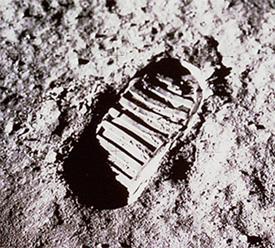First-Hand:Saturn V ground support computer reminiscences

Submitted by Richard Reis, PE, written January 7, 2019
In 1967, I graduated from the State University of New York at Stony Brook (now Stony Brook University) with a Bachelor of Engineering Sciences. I then joined RCA through their rotational program trying out work assignments in Van Nuys CA and 2 other locations. I settled in CA supporting RCA’s Saturn Ground Support computers. These computers supported the Saturn rockets, which powered Apollo and other missions into space. At various times, this assignment brought me to Alabama and Louisiana where the rockets were tested as well as Cape Canaveral Florida where the rockets blasted men and machines into space. On one visit to the Cape, a colleague took me to the top of the Vertical Assembly Building where the Gemini spacecraft was being prepared for launch. I was impressed.
The Saturn Ground Support computer was developed before the era of integrated circuits. Each circuit board contained the equivalent of a small scale integrated circuit, such as a quad nand gate or dual flip flops. They were extremely inefficient as well as being very large by today’s standards. Their inefficiencies meant that they needed very large and powerful power supplies. A pair of massive power supplies each providing 250 amps at 26 volts supplied each bank of computers. A circuit in the master power supply controlled timing of the silicon controlled rectifiers (SCRs) for both supplies and thus the output voltage. A massive inductor and many large capacitors smoothed the raw output. A DC regulator lowered remaining ripples to virtual pure DC output.
Each SCR was built into a massive bolt, screwed into a large heat sink, with a fat braded wire and a small control wire. When fired, current flowed from the bolt to the fat braded wire. Unfortunately the SCRs were failing at a high rate. A root cause study revealed that a relatively weak and slowly rising firing signal focused all of the current to an area of the SCR silicone chip close to where the firing signal was introduced. This successively burned that area and thus raised the SCR firing threshold, until the SCR stopped firing – meaning that the power supply stopped working.
I developed the new SCR driver based upon a complementary NPN / PNP cardiac pacemaker circuit I had used as my senior project at Stony Brook. The circuit, providing a more powerful and abrupt firing signal, distributed current to the entire SCR chip area. This resolved the root cause of the SCR failures and greatly raised power supply reliability.
Back to Human Space Travel Primary Sources